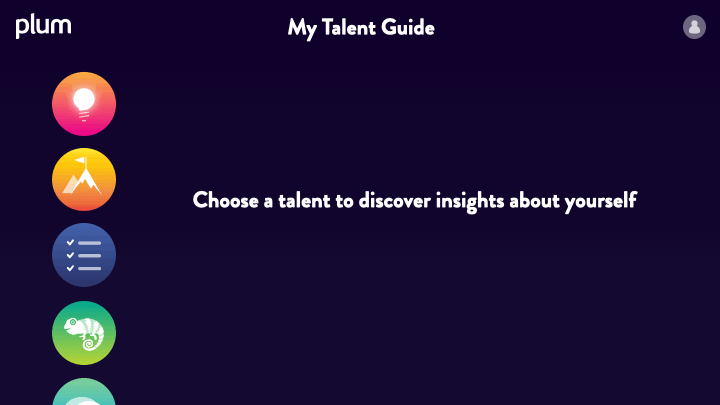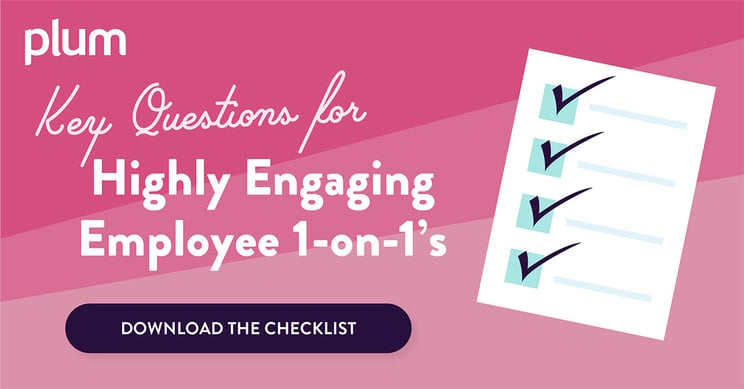Discover How Managers Can Maximize Employee Engagement in a Remote Model
Our work environments have changed dramatically over the past year, and few are feeling the pressure of those changes more acutely than those who lead teams. Over the last twelve months, many managers have adapted to working and leading fully remotely for the first time. And these days, their ability to adapt to leading in new working models is being put to the test again, as companies start to head back to the office or adopt hybrid work models.
Adapting to new working models is not without its challenges, and as a manager, it can be challenging to lead and engage your team when everything is constantly in flux. Add in the fact that managers alone account for 70% of the variance in team engagement and that more than half of employees surveyed in North America plan to look for a new job in 2021, and it can feel downright daunting to lead a team through these times.
The good news, however, is that by following some key practices rooted in data and insights, managers can keep their teams engaged, whether they’re working remotely, in person, or both.
Build connection and trust

One of the best ways to create a work environment that is genuinely engaging is to build connection and trust. When employees trust their managers and feel connected to their teams, they’re more likely to feel a sense of belonging and purpose in their work - no matter how many days a week they're spending in a physical office space.
So, how can managers build that connection and trust? By being vulnerable. Talking about their own strengths and areas of opportunity signals self-reflection, humility and a quiet confidence that leaves employees feeling like they can trust their leaders.
However, being vulnerable requires self-insight, and that’s where Plum can help. With a simple 25-minute assessment that measures personality, problem-solving ability and social intelligence, Plum can provide managers and employees alike with a Plum Profile that gives them valuable insights about who they are and how they show up at work. Rooted in decades of proven Industrial/Organizational (I/O) psychology, the Plum Profile outlines people's top three Plum Talents and sheds light on their preferred work style and work preferences.
Managers can also dig deeper into what Plum Talents drive and drain them with a Plum Talent Guide. When managers show vulnerability by talking about their Talents, it signals to employees that who they are is valued at work, it creates a common language to understand each other better, and it helps to shed light on the best ways for team members to work together. When employees and managers both understand what is draining for them and what gives them energy, they can talk openly about how they can best work together to achieve their goals, creating an atmosphere of true teamwork and support.
And the best part is that building connection and trust doesn’t only happen in the office or when employees are working remotely; it can happen in both settings. Managers simply need to commit to checking in with their employees and communicating often to create space for those more vulnerable conversations. Whether it’s weekly one-on-ones over the phone or a regular team meeting in the office, taking the time to check in with employees is essential for building connection and trust.
Get a handle on team dynamics
Relationships matter at work, and it’s not just the relationship that an employee has with their manager that impacts engagement. Team dynamics can have a big impact on how connected someone feels to their work – no matter if they’re working apart, or if they’re sitting beside their colleagues day-in and day-out.
For leaders to get a handle on team dynamics, they need to understand each employee’s strengths. Reviewing their team members’ Plum Profiles side-by-side allows leaders to see how they are similar or different to one another, so they can spot where there will be synergies and where conflicts might arise.
For example, one team member may be high in Teamwork, always wanting to work together to get things done, while another may be high in Execution, with a desire to move quickly to check things off their to-do list. These two approaches may cause frustration and conflict within the team, but using the valuable insights from their Plum Profiles, managers can proactively facilitate relationships on the team, ensuring that each team member is set up to do their best work and contribute to the team overall.

Plum insights also come in handy when a manager takes on a new job and inherits a new team. He or she can quickly get a handle on the team’s Plum Talents overall and recognize early on where the team may go off track, where they may need more direction or support, and where the team’s unique advantage may be.
Plus, having insight into employee’s Plum Talents allows managers to assign tasks more strategically, so that they are assigning work to people that energizes them and plays to their strengths. For example, if a star employee that the company is keen to retain is driven by communication, a manager could give that employee ample opportunities to take the lead on communicating key project updates, to help ensure that they continue to feel engaged and energized by their work.
Remember that a little acknowledgment goes a long way

74% of employees want more recognition for their work. There’s a huge opportunity for leaders to show their employees that they appreciate their efforts, and the good news is that a little acknowledgment goes a long way.
Taking time to acknowledge and recognize your employees’ positive contributions, especially when they’re navigating challenging times themselves, is important for keeping morale high and engagement strong. It becomes even more impactful when you connect your praise and acknowledgment to one of your employee’s innate talents. Who doesn’t feel good knowing that using their strengths is making a difference to their organization?
Telling an employee that they did something well, especially when it aligns with their natural strengths, makes recognition highly personalized and impactful. For example, if someone’s top talent is conflict resolution and you recently witnessed them facilitate a contentious discussion in a meeting with poise, let them know what a great job they did and why it was impactful. If you’re in the office, walk over to their desk and let them know soon after the meeting. The best recognition is timely. The same goes if you witnessed their exceptional peacemaking abilities over Zoom; take a minute to send them a message or jump on a call to give them that little boost of recognition in the moment.
Employees want to feel like their work matters, and when they see that their work aligns with their personal sense of purpose and meaning, engagement comes naturally.
Focus on growth and development
We all want to feel like we’re growing in our careers. Staying still for too long can be demotivating at best, and a cause for turnover at worst. Managers play a key role in fostering growth and development on their teams, which is a key lever for engagement.
Insights on employee’s strengths give managers and employees a roadmap for development in an easily accessible format, so that managers can be prepared to have high-impact development conversations whether they’re in the office or working from home.
Plum Talent Guides show what drives employees and what drains them, along with suggestions for how to develop in each area. Having that information at their fingertips makes development planning much more impactful, since employees can easily seek out courses in the company’s LMS to develop skills in the areas that drain them, find mentors to help them maximize their top strengths, and give them a personal “north star” when choosing their next role.

On-the-job learning is key for development, and managers play a big role in facilitating that element of employee growth. Employees want to take on new jobs, new assignments, and new projects to stretch themselves. When managers have insights on their employees’ talents, building task forces for high-priority projects becomes easier. Knowing what an employee’s strengths are, managers can call on them for opportunities that require their “special touch” or where they have the greatest opportunity to grow professionally – an ideal recipe for high engagement!
Keep it consistent
The key to fostering high engagement is to use these practices consistently.
That’s why we’ve created a handy checklist to keep these concepts at your fingertips every time you meet with your employees one-on-one.

